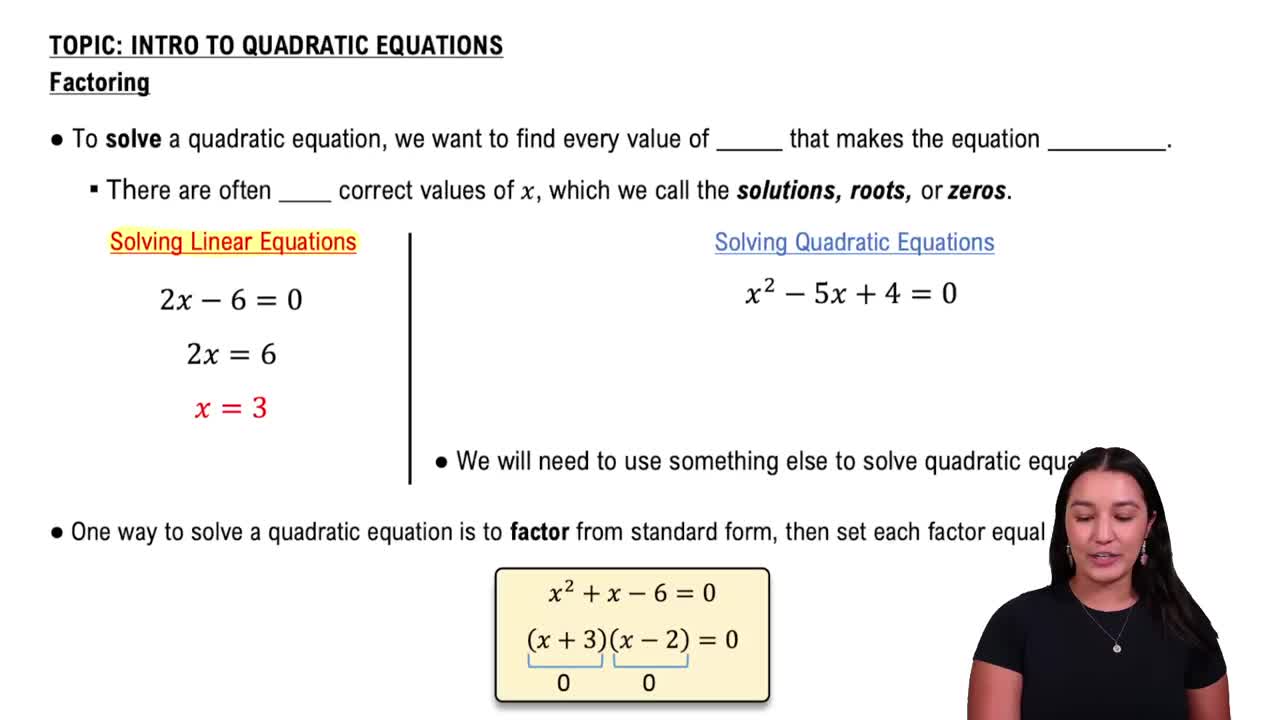Here are the essential concepts you must grasp in order to answer the question correctly.
Logarithmic Functions
Logarithmic functions are the inverses of exponential functions. The equation log_b(a) = c means that b raised to the power of c equals a (b^c = a). Understanding this relationship is crucial for solving logarithmic equations, as it allows us to rewrite the logarithmic expression in exponential form.
Recommended video:
Graphs of Logarithmic Functions
Properties of Logarithms
Logarithms have several key properties that simplify their manipulation. For instance, the product property states that log_b(mn) = log_b(m) + log_b(n), and the power property states that log_b(m^k) = k * log_b(m). These properties are essential for breaking down complex logarithmic expressions into simpler components.
Recommended video:
Solving Quadratic Equations
Many logarithmic equations can lead to quadratic equations when rewritten in exponential form. A quadratic equation is typically in the form ax^2 + bx + c = 0. Solving these equations often involves factoring, using the quadratic formula, or completing the square, which are fundamental techniques in algebra.
Recommended video:
Solving Quadratic Equations by Factoring
 Verified step by step guidance
Verified step by step guidance Verified video answer for a similar problem:
Verified video answer for a similar problem:



 4:46m
4:46m